I love to lie on the floor and do Feldenkrais lessons. But, as a Feldenkrais practitioner, I feel it’s my duty to tell you, if you really want to change your life, you’ll need to take some of that exploratory curiosity that you embrace in class and take it with you up into the field of gravity and out into the big, bad world out there!
I was just reminded about this . . .
The other day I was doing something I often do, sitting on my butt watching YouTube videos of people doing amazing movement. Trying to be a little more proactive, I switched to watching a video about how to do amazing movement, in case it might be useful the next time I actually got off my butt.
And, actually, it was useful. This video helped me start to see that the basic first steps of the art of parkour are not so crazy and flashy as those other videos I was watching. I thought: hey, I could probably do that!
As fate would have it, the internet delivered me another gift – a real human being named John Cedric Tarr who I “knew” on-line since he is a Feldenkrais practitioner just like me. John lives in Sweden, but he happened to be in DC and had a few extra hours the next morning. Would I like to meet up?
“Yes, of course!” I shot back, my fingertips making daring leaps from one letter to another across my keyboard. As we discussed logistics and it became clear he’d have some time to kill before I could connect with him, he wrote, “no problem, I’ll just do some parkour…”
OK, now I had no excuses left! Long story short, John gave me my first parkour lesson in a playground near my house yesterday morning. And tonight I went back to the park to explore what he showed me for the first time on my own.
Wow, my entire world just changed!!

Here’s some what I learned from John:
- The main thing isn’t being a daredevil, but yes, you must face your fears. So, start small, where everything is entirely safe! Jumping from one ledge to another is no different than jumping from one line on the sidewalk to another. So start practicing your precision jumps where the height of the jump doesn’t pose any danger. And start with short jumps . . . there’s no hurry!
- Vaulting over a bench or a fence starts by placing your hands down and kicking your legs behind you. That doesn’t require half the work that would be needed to lift them over the bench going forward. The first few times you don’t even worry about going over to the other side. Just place your hands and kick your legs up behind you, then start over. Later you can add a little forward momentum and your legs will fly right over the obstacle.
- How do you pull yourself up to that high place above you that you can just barely catch with your hands? It’s not all about pulling! Swing your legs and you’ll get more momentum. Then hook one more part of your body on the support and swing again, you’ll get there!
- Repeat! Repeat! Repeat! Jump over the bench 20 times. It will get easier! And, guess what? There isn’t any such thing as a “right way” to do it! Did you land on the other side of the bench? Yes? OK, that’s the “right way” to do it!
- Just a little bit of parkour makes the entire landscape look different.
About that last point: there we were in the playground and John spotted the swings. He jumped up and grabbed the bar they were hanging from. Then before I knew it, he hooked his elbows over the bar, swung his legs and used that momentum to carry himself all the way up to resting the front of his hips on the bar with his entire arms above. Then he jumped back down.

I tried, with less success. He suggested that I use a different hand grip and then proceed by swinging my legs over the bar.
I thought, “seriously?!”, but on my third try, I hooked one ankle.
“Now see if you can get your knee over it.” I could, but my next move was a false one and I jumped back down in order to avoid further embarrassment and/or injury.
But this was my just first try. There was a bigger lesson than the success or failure of the effort at this stage As I told John, “When we came here and I saw that swing set, I never imagined we could get on top of it!” By encouraging me to try and giving me a couple of simple suggestions, John showed me that something I had ruled out completely was actually possible. I hadn’t “conquered” it yet, but now that swing set looked entirely different! I see it and think of it has potentially being part of the territory where I can move.
Thanks John!!
So today it snowed in DC and I spent most of the day indoors. But at a certain moment, I thought, “what the hell am I doing inside?!” and I knew I needed some fresh air to keep myself sane. I decided I would go back to the park and see what else I could learn.
I just did what John showed me, but this time I really practiced, repeating each little movement adventure dozens of times and running all over the playground, having more and more fun as I got more used to the idea of being a kid again.
Here’s what I learned from my own adventures:
- One of the key ingredients to turning the environment into my playground is making decisions. 1) I look around for something to do. 2) I decide: I will jump over that bench. 3) I decide how I will jump over that bench: I will put my hands right THERE in order to support myself and swing my legs over.
- Another key ingredient: the eyes . . . once I decided that I was going to jump over that bench by putting my hands there, then my eyes would zero in on that point out of all the other possible stimuli of interest in the environment and my entire experience would be in relation to that single point until I was on the other side of the bench.
- Once I developed the understanding of my eyes and how they could zoom in on the points of support that would help carry me from one place to the next, I realized that this way of seeing the space changed the way I saw everything. Suddenly, I was looking at each structure and judging it – can it hold my weight or not? Is it close enough to reach or too far away? I began to see pathways of points that led from where I stood to places I might not previously have imagined that I could arrive to.
- Nothing I attempted was a test. Many times I began to try to jump a fence and a clear voice inside told me, “NO WAY DUDE!!” At that point, it was a simple choice: injure myself or bail out and start over? Never a hard decision! But usually, after a few more attempts and adjustments, I jumped the fence. Other times I said, “this fence is for another day.”
. . . And, tomorrow is another day!!
My conclusion: we can all do more than we think we can. Sometimes it’s a good idea to question your idea of your limits. Some of those limits are entirely in your imagination.

- I had to go back to the park the next day and I found out a lot of new things! Click here to read “Parkour Day 2: More Baby Steps Towards Freedom”
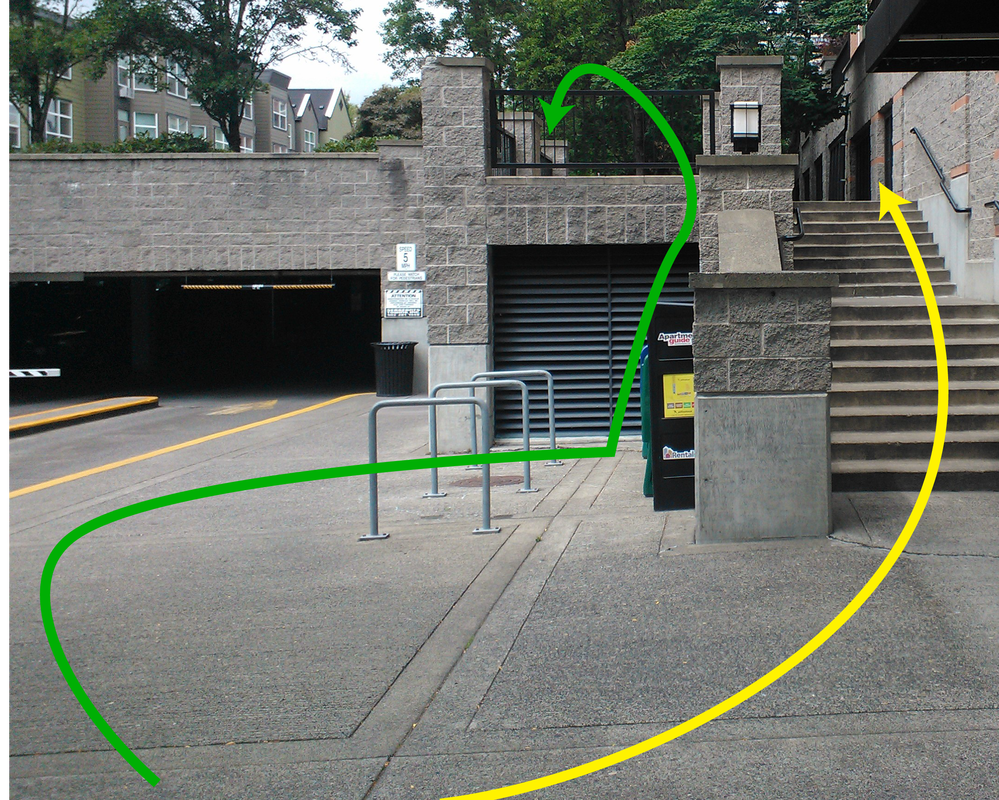
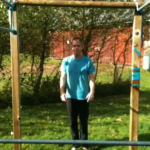

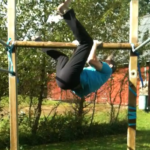
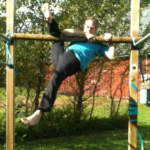
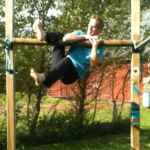
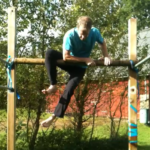
Hey, Seth – I love how Parkour is about practical exploration, both of your environment and your capabilities. Something I find incredibly useful, in this realm, is the notion of “starting from where you are” – getting a sense of what is within your reach, and starting from there to extend your reach.
That can be obscured when everything that makes the biggest splash, gets the most attention in popular culture is the most sensational stuff. There’s even an interesting tension in the Parkour/Freerunning movement(s?), described here: http://www.livestrong.com/article/538855-parkour-vs-freerunning/ . The Wikipedia Parkour page (https://en.wikipedia.org/wiki/Parkour) describes the distinction more clearly. I see both philosophies as being about play, but I find the more “purist” Parkour emphasis on practicality much more illuminating, conducive to attunement, versus the freerunning emphasis on style and appearance, which I find gets in the way of comprehensively tuning in.
I’m so green and new that you are teaching me the difference between parkour and freerunning that I didn’t know . . . but yes, I love how practical it is. I didn’t have to get more strength or flexibility to do what I’ve done in the past two days – I just had to get out of the house and get out of my previous mindset! I don’t expect I’ll end up jumping between rooftops any time soon, but I DO imagine that if I keep working the way I’ve done it so far – which has felt completely SAFE – I’ll probably end up doing all kinds of things I didn’t think were possible for me (in fact, it’s happened already).
Thanks for commenting!! 🙂
Pingback: Parkour Day 2 – More Baby Steps Towards Freedom | Move Like A Child!
Pingback: Taking Movement Investigation Beyond the Studio - Dallas Feldenkrais